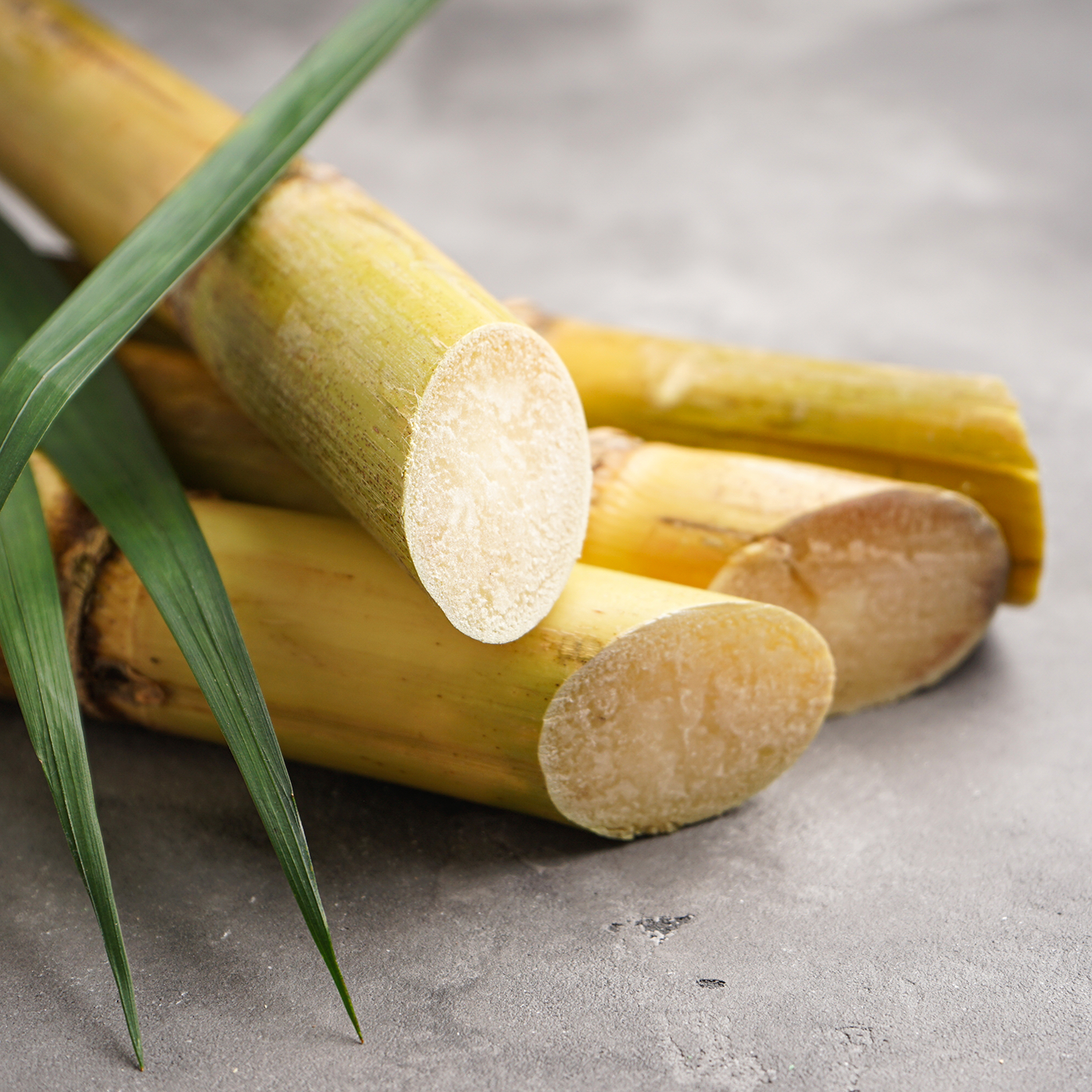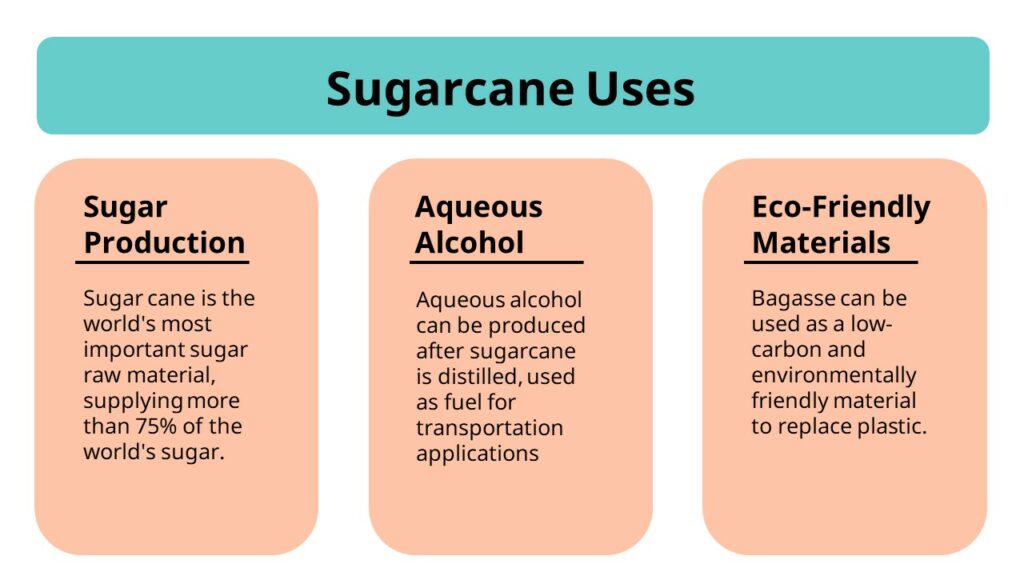Everything About Sugar Canes: What Are Sugar Canes Utilized For and Their Function in International Agriculture?
Sugar walking sticks offer as a cornerstone of worldwide agriculture, mostly recognized for their function in sugar production. They additionally add to the development of spin-offs like molasses and ethanol. These aspects not only sustain numerous industries yet additionally effect financial security in country regions. However, the cultivation of sugar walking canes encounters significant ecological challenges. Understanding their diverse function prompts more exploration into their farming techniques and sustainability efforts.
The Agricultural Process of Sugar Walking Cane Farming
Although sugar walking stick growing may differ by area, the basic agricultural process stays regular. The very first step entails selecting high-yielding varieties ideal for regional environments. Preparation of the dirt is essential, often requiring husbandry and the addition of plant foods to improve fertility. Planting typically occurs during the stormy period, with farmers utilizing either entire stalks or cuttings to establish brand-new crops.As the plants grow, they call for diligent treatment, including weed control, pest management, and watering, depending upon the ecological conditions. Farmers keep an eye on the sugar walking cane's growth cycle, which usually spans 10 to 24 months, prior to harvesting. Harvesting is labor-intensive, usually conducted by hand or with specialized machinery, ensuring minimal damage to the stalks. Following harvest, the walking stick is transported to refining centers. This precise growing procedure not just supports local economies however also plays a substantial function in worldwide farming techniques, adding to food and power materials.
Sugar Production: From Cane to Crystal
The journey of sugar production begins the moment fresh harvested sugar walking cane gets here at processing centers. The first action entails washing and cutting the walking cane to prepare it for extraction. Using high-pressure rollers, the juice is removed from the crushed walking stick, leading to a wonderful liquid understood as sugarcane juice. This juice goes through clarification, where contaminations are gotten rid of via the enhancement of lime and heat.Next, the clarified juice is focused by steaming it to create a thick syrup. This syrup is after that crystallized by cooling down, allowing sugar crystals to create. The crystallized sugar is divided from the staying syrup, called molasses, through centrifugation.Finally, the sugar crystals are cleaned and dried out, causing the acquainted granulated sugar (What Are Sugar Canes Used For). This procedure changes raw sugar cane into a product that is essential to different culinary and commercial applications, highlighting the relevance of sugar in international agriculture
Biofuels and Sugar Canes: A Lasting Future
As the world significantly looks for lasting power services, sugar walking canes have actually emerged as an encouraging source for biofuels. The biomass obtained from sugar walking sticks can be exchanged ethanol, an eco-friendly fuel option that considerably decreases greenhouse gas exhausts contrasted to nonrenewable fuel sources. This process not only supplies a cleaner power resource but additionally promotes energy self-reliance for many countries.In addition, sugar cane farming supports rural economic climates by producing jobs in both farming and biofuel production markets. Making use of sugar walking canes for biofuel production likewise encourages agricultural diversification, which can boost soil health and wellness and lower dependency on single plants. Moreover, the by-products of sugar walking stick handling can be utilized for electrical power generation, furthermore adding to a lasting power cycle. As countries undertaking to satisfy renewable resource targets, sugar walking canes are poised to play a necessary duty in forming a more lasting future in the biofuel landscape.
:max_bytes(150000):strip_icc()/GettyImages-564187083-721fb5bc6c764f929f5134d736828a4f.jpg)
The Function of Sugar Canes in Beverage Manufacturing
Sugar walking sticks play a considerable function in drink production, acting as a key component in rum and adding to the sweetness of several sodas. Furthermore, their all-natural juices are utilized in various drinks, enhancing flavor and charm. This convenience highlights the significance of sugar walking canes in the worldwide beverage industry.
Sugar Walking Cane in Rum
Rum manufacturing is elaborately connected to the cultivation of sugar walking cane, an important crop that gives the necessary fermentable sugars needed for fermentation. This procedure begins with the removal of juice from harvested sugar canes, which is then either fermented straight or processed into molasses. Yeast is included in transform the sugars into alcohol, resulting in a varied series of rum styles, from light to dark ranges. The geographical region where the sugar cane is grown considerably influences the taste profile of the rum, with aspects such as dirt kind and environment having fun important duties. Nations like Barbados, Jamaica, and Cuba are renowned for their rum production, showing the historical and cultural value of sugar walking stick within the global drink industry.
Soft Drinks Sweetener Source

All-natural Juice Production Utilizes
In enhancement to its substantial role in soft drink production, sugar walking stick is also crucial in the all-natural juice sector. The juice extracted from sugar walking stick, referred to as walking cane juice, is celebrated for its natural sweet taste and special flavor account. This juice is generally taken in fresh in various areas, specifically in tropical nations, where it is appreciated as a rejuvenating drink. Additionally, walking stick juice serves as a base ingredient in a variety of natural fruit juices and smoothies, enhancing both taste and dietary value. Its all-natural homes make it check my blog an attractive option to sweetening agents, appealing to health-conscious consumers. On the whole, sugar walking stick's convenience in juice production emphasizes its significance in contemporary drink offerings worldwide.
Developments in Sugar Cane Byproducts
Innovations in sugar walking stick results are leading the way for lasting options in various industries. Biofuels stemmed from sugar walking stick offer an alternative energy resource, while developments in sustainable packaging are reducing dependence on standard products. These growths highlight the versatility and capacity of sugar walking cane past its main usage in beverage production.
Biofuels From Sugar Walking Cane
Exactly how can the by-products of sugar cane contribute to lasting power services? The conversion of sugar walking stick into biofuels offers an encouraging method for eco-friendly power. By utilizing the fibrous deposit, called bagasse, manufacturers can generate bioethanol with fermentation processes. This bioethanol can work as a sustainable alternative to nonrenewable fuel sources, minimizing greenhouse gas emissions and reliance on non-renewable sources. Furthermore, molasses, one more result, can be fermented to create biofuels, making best use of source efficiency. The power generated from sugar walking stick not only provides a cleaner fuel my review here source however likewise enhances the total financial feasibility of sugar production. By incorporating biofuel manufacturing into their procedures, sugar walking stick sectors can play an important function ahead of time sustainable energy solutions around the world.
Lasting Packaging Solutions
Lasting product packaging options are increasingly being developed from sugar walking stick results, showcasing the convenience of this farming staple. Advancements such as naturally degradable plastics derived from bagasse, the coarse residue left after juice extraction, are obtaining traction. These products provide an environment-friendly option to standard plastics, reducing dependence on nonrenewable fuel sources and decreasing carbon impacts. Additionally, sugar cane-based product packaging is compostable, damaging down naturally without hurting the setting. Companies are now exploring these options to line up with customer need for sustainability. As recognition of plastic pollution grows, the adoption of sugar cane-derived product packaging is anticipated to increase, positioning sugar walking sticks as an essential player in the change to greener product packaging services in different sectors.
Economic Influence of Sugar Cane Farming

Sugar walking cane farming has deep origins in several economies, its financial influence expands much past farming manufacturing. This crop functions as a significant resource of income for millions of farmers worldwide, specifically in creating countries where agriculture is a key income. Sugar walking stick adds to neighborhood economies via job development in handling, cultivation, and harvesting. The sector additionally promotes development in related sectors such as transportation, devices manufacturing, and food processing.Furthermore, sugar cane is a vital gamer in international trade, influencing worldwide markets and prices. Nations that create sugar walking stick frequently rely upon exports to improve their financial stability. The spin-offs of sugar cane, such as ethanol and molasses, expand profits streams for farmers and add worth to the farming market. In general, the financial implications of sugar walking stick farming are profound, impacting not only farmers yet likewise nationwide economic climates and whole communities.
Environmental Considerations in Sugar Walking Stick Farming
While sugar walking cane farming plays an essential role in numerous economic situations, it also increases considerable environmental worries that can not be overlooked. go to this site The considerable use of fertilizers and chemicals in sugar walking stick farming frequently causes dirt degradation and water contamination. Overflow from these chemicals can pollute nearby water bodies, harming water environments. Additionally, the monoculture methods widespread in sugar cane farming minimize biodiversity, making ecosystems more at risk to insects and diseases.Deforestation is an additional critical issue, as land is often removed to give way for sugar plantations, resulting in habitat loss for wild animals and boosted carbon exhausts. Additionally, the high water consumption required for sugar walking cane irrigation can strain local water sources, specifically in dry areas. As worldwide need for sugar remains to rise, dealing with these environmental obstacles becomes essential to guarantee sustainable methods in sugar walking stick farming.
Regularly Asked Inquiries
What Are the Nutritional Benefits of Sugar Walking Stick?
The dietary advantages of sugar cane mostly include its high carbohydrate web content, offering power. Furthermore, it consists of vitamins, minerals, and anti-oxidants that might support general health and wellness, though small amounts is necessary due to its sugar content.
Just How Does Sugar Walking Cane Affect Resident Ecosystems?
Sugar walking cane growing can significantly affect regional ecosystems by altering land use, affecting biodiversity, and requiring substantial water resources. Furthermore, it may result in soil degradation and chemical overflow, interrupting surrounding habitats and wild animals populaces.
What Is the Background of Sugar Walking Stick Growing?

Exist Alternatives to Sugar Walking Stick for Sugar Manufacturing?
Alternatives to sugar cane for sugar production consist of sugar beets, corn, and numerous exotic plants like sorghum and agave (What Are Sugar Canes Used For). These crops supply varied resources of sweet taste, each with distinctive farming demands and ecological influences
How Do Weather Condition Patterns Impact Sugar Walking Stick Yields?
Weather patterns significantly affect sugar walking cane returns via temperature variations, rains quantities, and seasonal cycles. Drought or too much rainfall can impede growth, while excellent conditions improve photosynthesis, ultimately impacting the amount and high quality of the harvest. The journey of sugar production begins the minute fresh harvested sugar walking stick shows up at processing facilities. The taken shape sugar is divided from the staying syrup, known as molasses, via centrifugation.Finally, the sugar crystals are cleaned and dried out, resulting in the familiar granulated sugar. Rum production is elaborately linked to the cultivation of sugar cane, a necessary plant that provides the essential fermentable sugars required for fermentation. Furthermore, the monoculture techniques common in sugar walking cane farming reduce biodiversity, making ecological communities much more at risk to pests and diseases.Deforestation is another important problem, as land is often gotten rid of to make method for sugar haciendas, leading to habitat loss for wildlife and enhanced carbon emissions. Alternatives to sugar walking stick for sugar production include sugar beets, corn, and various exotic plants like sorghum and agave.